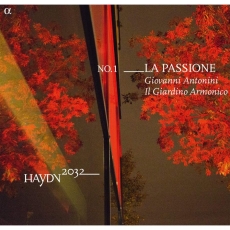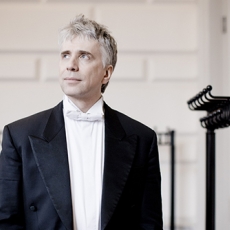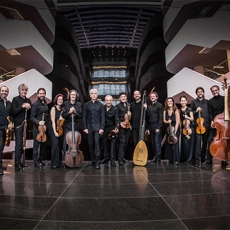Giovanni Antonini & Il Giardino Armonico - Haydn 2032, Vol. 1: La Passione - Early Music Today
With his ‘Haydn 2032’ project, Giovanni Antonini aims to record all 107 Haydn symphonies by 2032, the year that will mark the tricentenary of the composer’s birth.The plan is to divide the recordings between his two regular ensembles, Il Giardino Armonico and the Basel Chamber Orchestra, and to group the symphonies thematically rather than chronologically. Volume 1 explores ‘Passion’ in nos 49 (aka ‘La Passione’), 39 and 1; Volume 2, about ‘Originality’, features nos 46, 47 and 22 (aka ‘Il Filosofo’). Antonini also proposes to contextualize Haydn’s music by including works by his contemporaries, so Gluck’s 1761 ballet suite Don Juan, with its fiery climax, anticipates the Sturm und Drang intensity of Symphonies 39 and 49, while Volume 2 has an eccentric W. F. Bach symphony that sits well beside Haydn’s later quirky experimentalism in, for example, no 46s capricious finale and no 47s minuet and trio ‘al roverso’ (played backwards).
Il Giardino Armonico, with their reputation for speed, precision and pizzazz, are a good choice for these opening volumes, which focus chiefly on Haydn’s Sturm und Drang symphonies (i.e. no’s 39, 46, 47 and 49), renowned for their driving rhythms, volatile dynamics and exhilarating dissonances. The group’s lean, razor-sharp strings, and punchy horns and oboes certainly enhance Haydn’s scintillating faster movements, yet also bring a burnished glow to the Adagios and Andantes. Tempi tend to be pacy, justifiably so given the music’s inherent vitality, but occasionally seem a little too scampering, especially in the minuets, which hurry along faster than any other versions I’ve heard.
Still, these are exciting performances that stand comparison with the benchmark period-instrument recordings by Trevor Pinnock and Derek Solomons. I especially enjoyed Il Giardino Armonico’s fluent treatment of Symphonies 46 and 47, which sound fresh and reinvigorated here, though with all due care paid to nuances of colour and dynamic. The group are brilliant at conveying the emotional turbulence that courses through parts of no’s 39 and 49 and the close of Don Juan, where the Don plummets into the flames of hell amid ominously blasting horns and yelping oboes. The fervour and anguish of these pieces are portrayed vividly, yet with the utmost musicality. The first volume ends with a spirited version of Haydn’s Symphony no 1, a favourite of Antonini, because, he says, it already shows Haydn’s ‘style, his sense of humour, and his love of the unexpected’.


